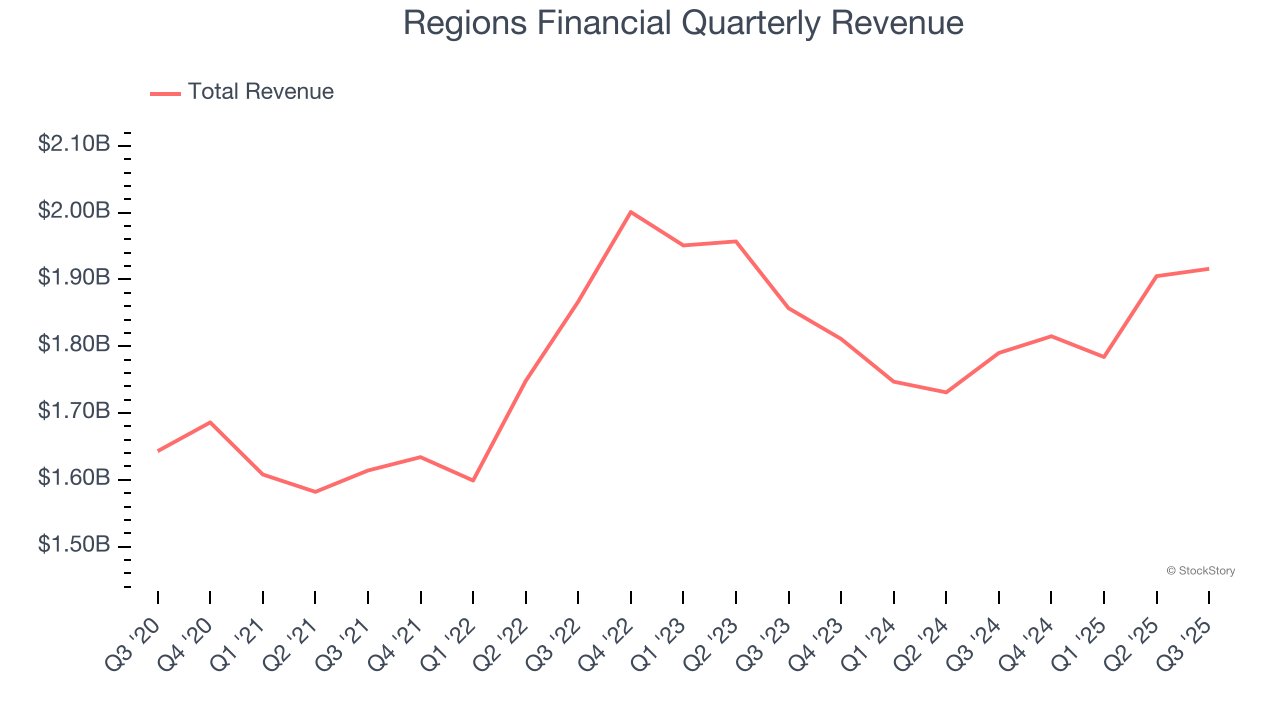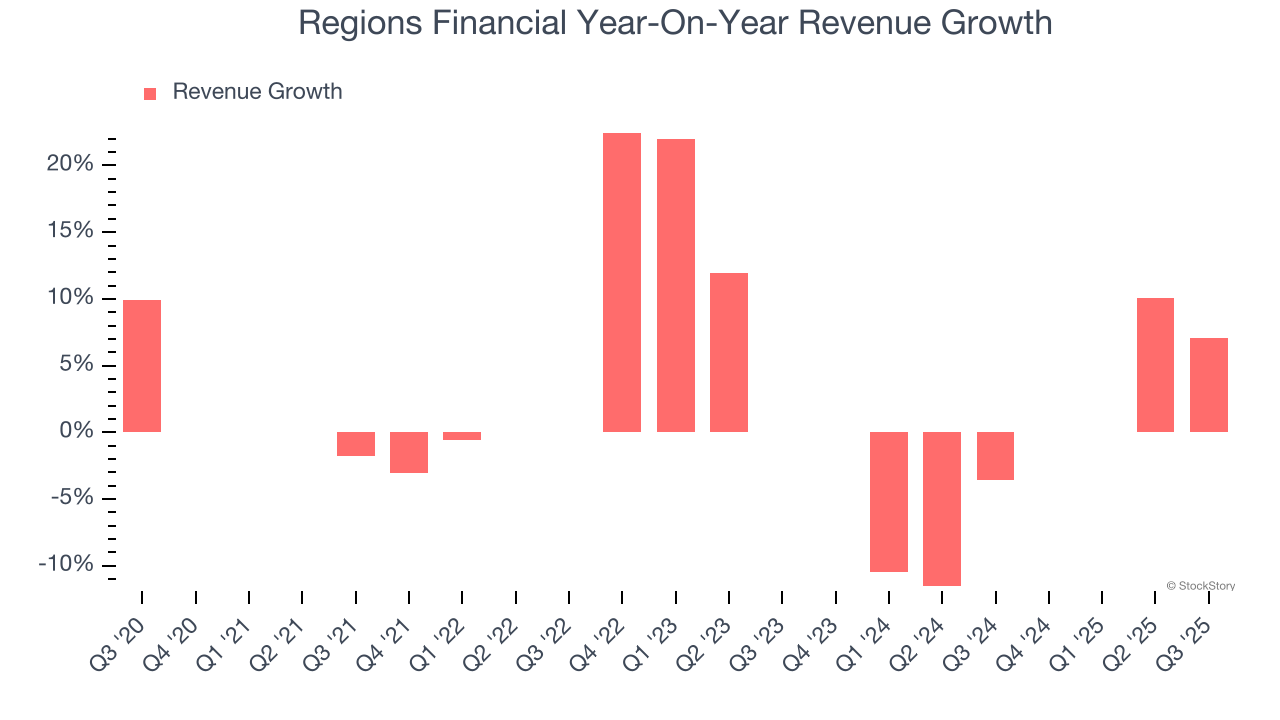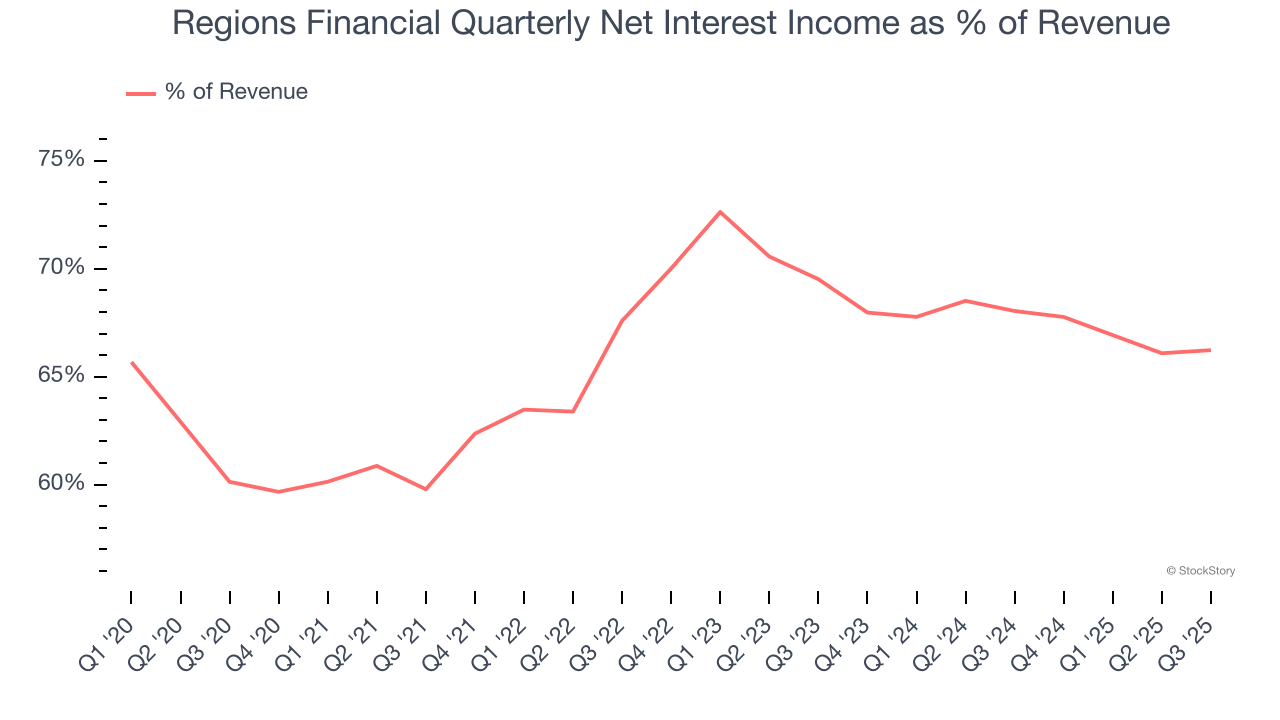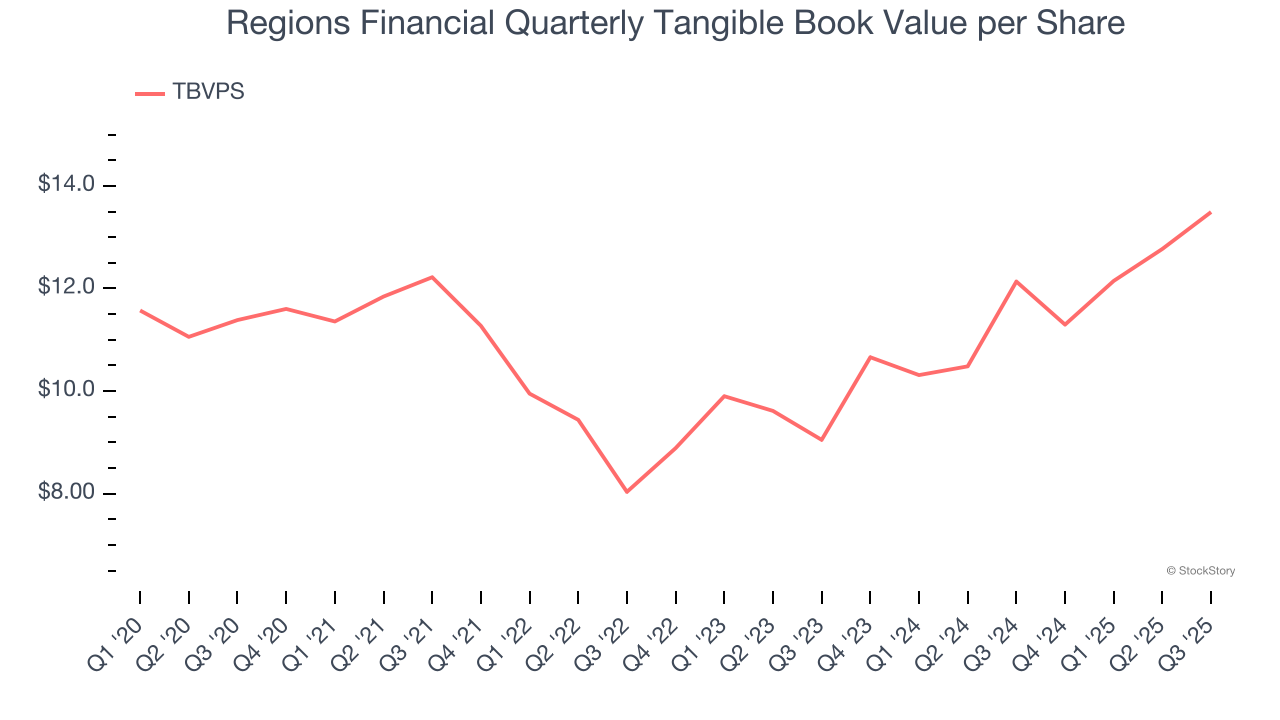
Regional banking company Regions Financial (NYSE: RF) met Wall Street’s revenue expectations in Q3 CY2025, with sales up 7% year on year to $1.92 billion. Its non-GAAP profit of $0.63 per share was 5.8% above analysts’ consensus estimates.
Is now the time to buy Regions Financial? Find out by accessing our full research report, it’s free for active Edge members.
Regions Financial (RF) Q3 CY2025 Highlights:
- Net Interest Income: $1.27 billion vs analyst estimates of $1.28 billion (4.2% year-on-year growth, 0.7% miss)
- Net Interest Margin: 3.6% vs analyst estimates of 3.6% (4.1 basis point miss)
- Revenue: $1.92 billion vs analyst estimates of $1.92 billion (7% year-on-year growth, in line)
- Efficiency Ratio: 57.2% vs analyst estimates of 56.5% (66.9 basis point miss)
- Adjusted EPS: $0.63 vs analyst estimates of $0.60 (5.8% beat)
- Tangible Book Value per Share: $13.49 vs analyst estimates of $13.18 (11.2% year-on-year growth, 2.4% beat)
- Market Capitalization: $20.84 billion
Company Overview
Tracing its roots back to 1971 and operating in a region known as the "heart of Dixie," Regions Financial (NYSE: RF) is a financial holding company that provides banking services, wealth management, and specialty financial solutions across the South, Midwest, and Texas.
Sales Growth
Net interest income and and fee-based revenue are the two pillars supporting bank earnings. The former captures profit from the gap between lending rates and deposit costs, while the latter encompasses charges for banking services, credit products, wealth management, and trading activities. Over the last five years, Regions Financial grew its revenue at a mediocre 4.1% compounded annual growth rate. This fell short of our benchmark for the banking sector and is a poor baseline for our analysis.

Long-term growth is the most important, but within financials, a half-decade historical view may miss recent interest rate changes and market returns. Regions Financial’s performance shows it grew in the past but relinquished its gains over the last two years, as its revenue fell by 2.3% annually.  Note: Quarters not shown were determined to be outliers, impacted by outsized investment gains/losses that are not indicative of the recurring fundamentals of the business.
Note: Quarters not shown were determined to be outliers, impacted by outsized investment gains/losses that are not indicative of the recurring fundamentals of the business.
This quarter, Regions Financial grew its revenue by 7% year on year, and its $1.92 billion of revenue was in line with Wall Street’s estimates.
Net interest income made up 66% of the company’s total revenue during the last five years, meaning lending operations are Regions Financial’s largest source of revenue.

Net interest income commands greater market attention due to its reliability and consistency, whereas non-interest income is often seen as lower-quality revenue that lacks the same dependable characteristics.
Unless you’ve been living under a rock, it should be obvious by now that generative AI is going to have a huge impact on how large corporations do business. While Nvidia and AMD are trading close to all-time highs, we prefer a lesser-known (but still profitable) stock benefiting from the rise of AI. Click here to access our free report one of our favorites growth stories.
Tangible Book Value Per Share (TBVPS)
Banks are balance sheet-driven businesses because they generate earnings primarily through borrowing and lending. They’re also valued based on their balance sheet strength and ability to compound book value (another name for shareholders’ equity) over time.
This explains why tangible book value per share (TBVPS) stands as the premier banking metric. TBVPS strips away questionable intangible assets, revealing concrete per-share net worth that investors can trust. Other (and more commonly known) per-share metrics like EPS can sometimes be murky due to M&A or accounting rules allowing for loan losses to be spread out.
Regions Financial’s TBVPS grew at a tepid 3.5% annual clip over the last five years. However, TBVPS growth has accelerated recently, growing by 22.1% annually over the last two years from $9.05 to $13.49 per share.

Over the next 12 months, Consensus estimates call for Regions Financial’s TBVPS to grow by 8.2% to $14.59, decent growth rate.
Key Takeaways from Regions Financial’s Q3 Results
It was encouraging to see Regions Financial beat analysts’ tangible book value per share expectations this quarter. On the other hand, its net interest income slightly missed. Zooming out, we think this was a mixed quarter. The stock remained flat at $23.55 immediately following the results.
Is Regions Financial an attractive investment opportunity right now? If you’re making that decision, you should consider the bigger picture of valuation, business qualities, as well as the latest earnings. We cover that in our actionable full research report which you can read here, it’s free for active Edge members.






